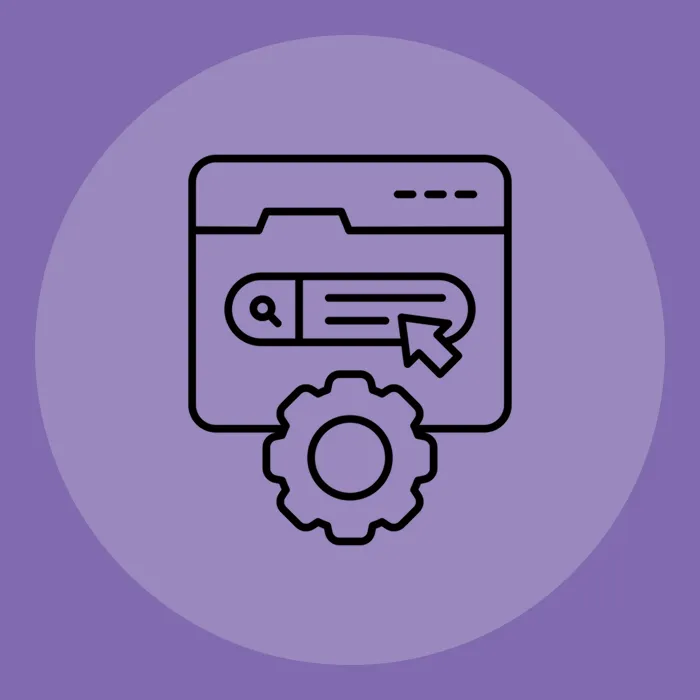With the rise of voice assistants like Alexa and AI chatbots, search behavior is evolving. Users now expect instant, conversational answers instead of long web pages. In fact, 90% of users find voice search easier than traditional search.
With this rise, Answer Engine Optimization (AEO) is gaining momentum.
Explained simply, it structures content to provide answers to user questions using AI tools. Unlike typical SEO based on keywords and backlinks, AEO prioritizes clarity, accuracy, and structure. It makes sure your content gets chosen by intelligent systems such as ChatGPT, Bard, and Google’s Search Generative Experience (SGE).
As answer engines grow, visibility depends on how well your content communicates value. This blog will help marketers, SEOs, and tech-driven businesses apply the best answer engine optimization solutions for AI tech and voice-led discovery.
The Rise of AI Answer Engines
Traditional search engines display ranked links in response to keyword queries. Users must browse and interpret those results. Answer engines, on the other hand, skip the link list; they deliver direct, context-aware answers by understanding natural language and user intent.
Unlike SEO-driven search engines, AI answer engines use structured data, semantics, and real-time language models. Their goal is not to show you content; it’s to be the content you consume.
Popular examples of answer engines include:
- ChatGPT – Delivers conversational answers based on vast language training datasets
- Google SGE (Search Generative Experience) – Uses generative AI to summarize results inline
- Bing AI – Integrates chat-based answers alongside traditional search
- Perplexity.ai – Combines citation-based sources with AI summaries
Key technologies powering this shift include:
- Featured snippets – Short summaries extracted from optimized pages
- Knowledge Graphs – Databases of interconnected facts, entities, and relationships
- Structured data (Schema.org) – Enables machines to parse content with precision
As these engines grow in influence, answer engine optimization (AEO) becomes essential. Businesses must now create content that is visible, processable, and ready to be extracted, understood, and trusted by AI systems.
Being chosen as the “best answer” requires clarity, structure, and authority. It’s not about ranking anymore; it’s about relevance and usability for machines.
Why AEO Matters Now More Than Ever
Search engines are becoming smarter, focusing on intent and not just keywords. There's always been a focus on link authority and keyword targeting for SEO. AEO, by contrast, responds to how people ask questions and how the search machines now actually answer.
AI platforms, such as ChatGPT, Bard, and Bing AI, are beginning to circumvent traditional SERPs, delivering direct answers at the forefront of the user experience. Now, they no longer need to wade through blue links; they receive clear, instant answers driven by language models that are trained to be relevant.
This shift is critical because, according to a report by Engine Scout, the feature snippet receives 35.1% of the entire click share. It is also crucial because:
- Most users now expect instant, accurate answers, without visiting a full webpage.
- Voice assistants like Alexa and Google Assistant rely heavily on well-structured AEO content.
For SaaS, B2B tech, and AI-first businesses, the impact is even greater:
- These companies handle complex queries that benefit from structured, trust-rich content.
- AEO helps position them as credible sources in AI-powered interfaces.
- Unlike SEO, where ranking is competitive, AEO is about being selected as the best response.
To adapt, content must focus on clarity, structure, and authority; optimized not for search engines, but for answer engines.
Key Components of Answer Engine Optimization
To succeed with answer engine optimization (AEO), your content must be structured for both clarity and machine readability. AI tools don’t scan content like humans. They extract meaning based on patterns, metadata, and semantic relevance.
1. Structured Data and Schema Markup
Schema markup tags help machines interpret the purpose and format of your content.
- Use FAQ, HowTo, Product, and Article schemas wherever applicable.
- Add metadata that aligns with Google’s rich result guidelines.
- Tools like Schema.org or Merkle’s Generator make integration easier.
2. Clear, Concise, and Authoritative Content
AI engines prioritize direct, well-structured responses.
- Answer one question in each section.
- Keep sentences short and grammatically correct.
- Use reliable sources and cite them when needed.
- Ensure authorship and topical authority are visible.
3. Question-Answer Format
Organize content in formats AI engines prefer:
- Anticipate “People Also Ask” questions.
- Step-by-step guides improve instructional clarity.
- Use comparisons to help users make informed decisions.
4. Semantic SEO and Entity Optimization
Go beyond keywords and focus on context and concept relationships.
- Identify key entities using tools like SurferSEO or Clearscope.
- Link related concepts within and across pages.
- Help engines “understand” not just “match.”
5. E-E-A-T Principles
Experience, Expertise, Authoritativeness, and Trustworthiness are foundational.
- Show real-world credentials.
- Link to external validation, like awards or publications.
- Maintain secure, fast-loading sites with clear navigation.
How to Optimize Content for Answer Engines
For answer bank optimization (AEO) to work, your content needs to be created for clarity, intent, and structured understanding. AI models don’t browse the way we do; they extract the succinct, authoritative insights. Here’s how to get your content to the top.
1. Identify and Answer PAA Questions
Start by researching “People Also Ask” (PAA) boxes on Google.
- Use tools like AlsoAsked or AnswerThePublic.
- Target long-tail queries that your audience genuinely searches.
- Frame H2s and H3s as specific questions, then answer them clearly below.
2. Use Natural Language and Conversational Tone
AI engines prefer responses that sound human, not robotic.
- Mimic how your users would phrase questions and answers.
- Minimize jargon and always define terms.
- Use contractions and active voice for engagement.
3. Break Content into Digestible Sections
Long paragraphs confuse models and readers alike.
- Use descriptive subheads and bullet points where appropriate.
- Keep answers under 40 words when targeting featured snippets.
- Group content logically to support semantic flow.
4. Implement Schema Markup
Schema bridges your content to answer engines.
- Add FAQ, HowTo, Product, and Article schemas based on context.
- Validate using Google’s Rich Results Test and Schema.org guidelines.
- Structured data improves eligibility for AI-generated summaries.
5. Optimize for Featured Snippets and Zero-Click Results
Snippets are often the first and only result shown.
- Provide concise definitions, summaries, and lists in structured blocks.
- Place high-value answers near the top of the page.
- Use numbered lists, tables, and short intros for maximum scanability.
This structured approach supports the top answer engine optimization strategies for AI products and drives visibility across AI-first interfaces.
Tools & Platforms That Help with AEO
To implement effective answer engine optimization (AEO), the right tools make all the difference. These platforms help improve clarity, structure, and discoverability, critical for surfacing in AI-powered results.
1. SurferSEO
SurferSEO leverages NLP to evaluate content relevance against top-ranking pages. It provides content scores based on semantic matching and keyword optimization. This helps marketers tailor their writing to match how AI systems interpret and prioritize information in answer-based formats.
2. AlsoAsked / AnswerThePublic
These tools surface real-world questions users are typing into search engines. AlsoAsked maps related queries visually, while AnswerThePublic clusters questions around a root topic. Both help uncover intent-driven prompts ideal for structuring FAQ-style content or conversational responses.
3. Schema.org / Merkle Schema Generator
Structured data is vital for answer engine optimization. Schema.org provides schema vocabulary used by major search engines, while Merkle’s tool makes implementation easier. They help embed machine-readable FAQs, HowTo, and Product, boosting the chances of being featured in AI responses.
4. Google Search Console + Bing Webmaster Tools
Both platforms offer diagnostics, performance insights, and structured data validation. You can monitor indexed pages, check schema errors, and ensure your AEO content is correctly interpreted. These tools also provide feedback on impressions from search and AI result interfaces.
AEO vs. Traditional SEO
Answer engine optimization is not a substitute for traditional SEO, but it is a sign of how content needs to adapt as search has grown more conversational. While both aim to boost discoverability, they differ in purpose, format, and targeting approach.
Traditional SEO optimizes content for increased visibility, and it includes keywords, backlinks, long-form blogs, etc. The intention here is to get pages to rank in the SERPs. The building is often centered on keyword density, page authority, and technical factors like crawlability.
AEO, on the other hand, prioritizes user intent and structured answers. It optimizes content for AI engines like ChatGPT, SGE, and Alexa. Instead of ranking pages, the goal is to be directly cited or surfaced as the best response.
| Aspect | SEO | AEO |
| Focus | Keywords and backlinks | Intent, clarity, and structure |
| Target Platform | Search Engines (Google, Bing) | AI tools and voice assistants |
| Format | Long-form blogs, backlinks | Clear answers and structured content |
| Goal | Rank in SERPs | Get selected by AI-powered engines |
Understanding both models is key to building future-proof content strategies.
Wrapping Up
As search moves from blue links to direct answers, AEO is your ticket to visibility in ChatGPT, Google SGE, and voice assistants.
AEO goes beyond keywords; it's about structuring content for clarity, context, and credibility. This guide breaks down how to craft content that machines can parse, trust, and feature as the definitive answer users hear or see.
FAQs
1. Is AEO replacing SEO?
No, AEO is not replacing SEO; it is an evolution of it. Whereas SEO is mostly about keyword ranking and backlinks, AEO is about how you can provide answers in the format that AI and the voice provide them. SEO gets you traffic; AEO gets you well-positioned for responses based on artificial intelligence.
2. What tools help with AEO content audits?
Tools like SurferSEO assist with NLP-driven content scoring. Google Search Console and Bing Webmaster Tools help test structured data. AlsoAsked and AnswerThePublic uncover user questions for optimizing answer-focused content.
3. How does Google SGE impact traditional rankings?
Google’s Search Generative Experience (SGE) surfaces AI-generated summaries above regular results. This shifts visibility away from organic links. Pages with structured data, clear answers, and high trust signals are more likely to be featured.
4. Can small brands compete in AEO?
Yes, small brands can thrive in AEO with well-structured, authoritative content. Unlike traditional SEO, AEO doesn’t demand high domain authority. It rewards clarity, relevance, and semantic strength, making it an opportunity for lean teams to stand out.









